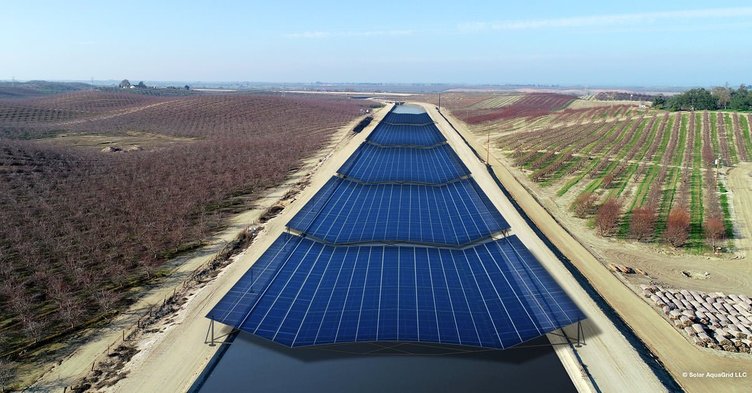South San Joaquin Irrigation District has 30 miles of canals.
One day those canals could be lined with turbines generating electricity significantly below what PG&E charges.
And if a pilot project unveiled this week for a first-in-the-nation solar project over Turlock Irrigation District canals pans out, SSJID could explore the possibility of doing the same over its 30 miles of canals and even 300 miles of buried pipeline.
The SSJID board Tuesday took the initial preliminary step to possibly be one of the first irrigation districts in California to place small power generating turbines in its canals.
“It is in the preliminary stages,” noted SSJID General Manager Peter Rietkerk of the project the district is teaming up with Emrgy to place a test turbine in the main canal between North Dodds Road and Woodward Reservoir. The power generated is anticipated to be half the cost per kilowatt hour than what the district buys from PG&E based on current rates.
The canal turbines, if the SSJID board decides to go with them, would initially augment efforts the district already has in place to reduce water treatment power costs through a 1.4 million kilowatt hour solar array already in place.
But given they simply need sustained flows at a certain level as opposed to significant drops that traditional hydroelectric plants require, it is plausible such turbines could be placed elsewhere besides the initial 10 to 15 locations considered ideal between Woodward Reservoir and the nearby surface water treatment plants.
And while the district mulls the feasibility of the turbines, they will be monitoring the TID pilot project.
Rietkerk said there are a lot of questions that need to be answered about the feasibility of solar panels over canals. But if they show promise besides generating clean, less expensive renewable energy they also would help reduce evaporation of water from canals.
Rietkerk said the district is committed to exploring power generating options that make sense and can deliver less expensive power that is also cleaner.
The TID solar project is a collaboration of Department of Water Resources, Solar AquaGrid and the University of California, Merced.
Dubbed Project Nexus, the $20 million endeavor will assess reduction of water evaporation resulting from midday shade and wind mitigation; improvements to water quality through reduced vegetative growth; reduction in canal maintenance through reduced vegetative growth; and generation of renewable electricity.
The inspiration for the project came from a UC Merced study published last March. The study illustrated that covering all of the approximately 4,000 miles of California canals could show a savings of 63 billion gallons of water annually, comparable to the amount needed to irrigate 50,000 acres of farmland or meet the residential water needs of more than 2 million people.
According to the study, the 13 gigawatts of solar power the solar panels would generate each year would equal about one sixth of the state’s current installed capacity.
To contact Dennis Wyatt, email dewyatt@mantecabulletin.com





